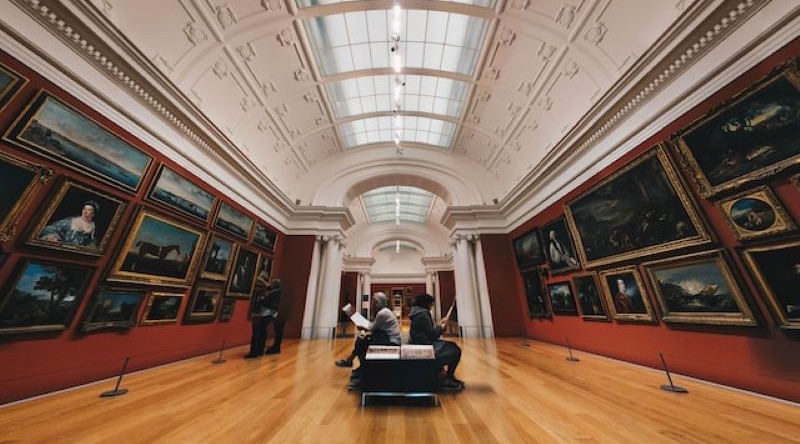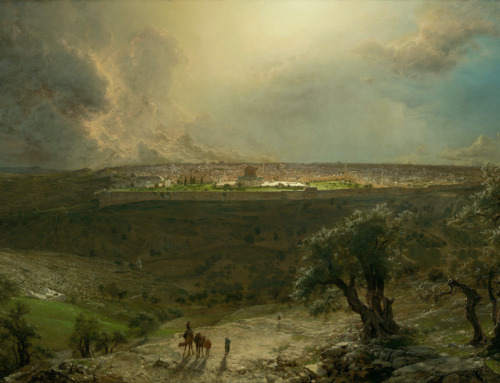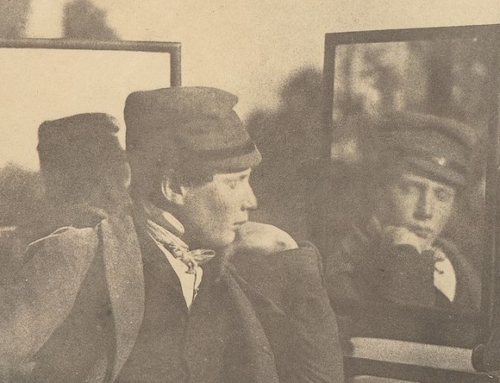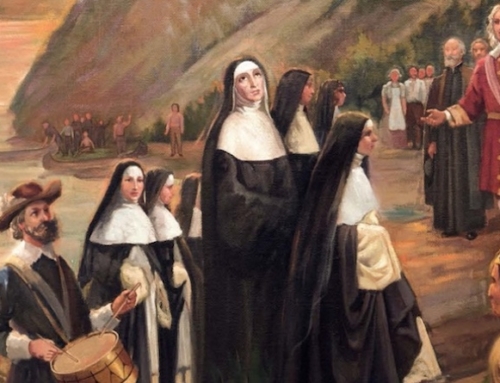This is part of a series on American Catholic authors. Read the series introduction here.
Modern man is shackled in his own skin. He wants total unbridled freedom of choice, and yet his poor decisions and sins are exactly what keep him locked up. Here’s the worst part: he doesn’t even have himself for consolation. In his attempts to create his own world, he does not know the real world, the world he is a part of—ergo, he does not even know himself.
How appropriate, then, that the only contemporary author in our series denies that her work is a plunge into reality. Rather, she says, “They’re just stories, I made it all up.”
Born in the Mississippi Delta, Donna Tartt was exposed to the classics of literature, with Dickens and the Greeks as primary influences. After a literature-filled youth and a short stint at Ole Miss, Tartt transferred to Bennington College, a small, rather unorthodox liberal arts college. She studied classics, but also shared classes with Bret Easton Ellis, whose American Psycho demonstrates the particular malaise of 1980s America. Standing on the edge of the changing times, she bears a certain yearning in her work: loving what is old and time-honored, yet standing in the cold newness of the zeitgeist.
Since beginning her writing, Tartt has been somewhat of a recluse. Although she interviews to promote her work, she more or less has followed a pattern: spend ten years writing, release a book, and return to the hermitage. Rinse and repeat. Yet this process has created an impressive trilogy—The Secret History (1992), The Little Friend (2002), and The Goldfinch (2013). More than this, she doesn’t seem to reveal much of herself in these novels. The Secret History and The Goldfinch are both told in the first-person from a male perspective. Ironically enough, although a young girl from Mississippi is the protagonist of The Little Friend, it is narrated in the third person.
So where is the “reality” we have cherished so dearly in the canon of American Catholic writers? Tartt seems to hide herself, and, as quoted above, she is just “making up” stories. Writing from her perspective as a Catholic convert, Tartt writes in the 2000 essay “The Spirit and Writing in a Secular World”:
“Something in the spirit longs for meaning—longs to believe in a world order where nothing is purposeless, where character is more than chemistry, and people are something more than a random chaos of molecules. The novel can provide this kind of synthesis in microcosm, if not in the grandest sense; it conveys the impression (if not the reality) of a higher, invisible order of significance.”
The “meaning” behind it all is that she “made it all up.” Her worlds are constructed—they constitute the order in which her characters live. The big problem for those characters? They don’t quite know what that order is. Her characters’ lies, curiosity, drugs, lust, and crimes trap them in cages, where they lose touch with reality, and therefore with themselves. All this can make the reader feel a bit claustrophobic. Fair warning to the new reader: Tartt deals with heavy realities of the modern world with blunt words.
The Secret History follows Richard Papen, a student at Hampden College in Vermont, as he descends into a circle of crime and secrets, all to become ever closer to an inner circle of elite classics students. Under the enigmatic Professor Julian Morrow, these students seek to abandon the “burden of self” through an embrace of Dionysian revelry, where passions are gods and spontaneity is their divine assistance. Richard’s acquiescence to this culture is directly tied to the losing of his own self. Shortly after a horrendous crime, he muses about the crushing weight of regrettable memories:
“Other things—naked, sputtering, indelible in their horror—are too terrible to really ever grasp at all. It is only later, in solitude, in memory, that the realization dawns: when the ashes are cold; when the mourners have departed; when one looks around and finds oneself—quite to one’s surprise—in an entirely different world.”
While Richard’s actions shape his worldview in such a way that he loses his grasp on reality and his own self, The Goldfinch, much-debated and –discussed, presents a protagonist with a slightly more lucid, albeit imperfect, view of order. Theo Decker finds himself in possession of a Dutch masterpiece after a terrorist bombing on the Metropolitan Museum of Art, which takes his mother. The sweeping narrative—covering ten years of Theo’s life through New York, Las Vegas, and Amsterdam—is an addicting read. Through it all, Theo desperately searches for . . . something. He’s not quite sure what.
As the pages turn, Theo’s life moves forward by various contingencies and strange coincidences, and yet his own lies often move him two steps back. But by the end, that “something” he’s been after makes him think there’s a whole lot more to the story than just mistakes and chaos. He paraphrases the rather crude description of divine providence given by his friend Boris: “Maybe I only see a pattern because I’ve been staring too long. But then again . . . maybe I see a pattern because it’s there.” Theo finally begins to see that something in his life is on purpose. He doesn’t quite know what but he knows that it is the fact.
Tartt’s novels point to an order. And yet her characters, because of their false ideas and beguiling doctrines about what is truly good and perfective, whether it be inclusion in a secretive club or the clandestine possession of a priceless piece of art, often can only see that order darkly through a mirror (1 Cor 13:12). Focused on taking off that chaotic “burden of self,” they know not how to put on the “new self” (Eph 4:24). Uncomfortable in their own skin, they are unable to take in the new wine of divine life.
What Tartt leaves us with is a question of knowledge, and if of knowledge then of seeing. When we look at a painting and see it only as scratches of pigment upon a canvas, we miss the big picture. When we look at what seems like chaos in our lives, we see ourselves as chaos. But when we see it all as a pattern, as a design, as God working—then we see ourselves as the persons we are meant to be. The Little Friend provides the hermeneutic in an epigraph from another famous Catholic writer: “The slenderest knowledge that may be obtained of the highest things is more desirable than the most certain knowledge obtained of lesser things” (ST I, q. 1, a. 5, ad. 1).
✠
Photo by Dev Benjamin (Unsplash)







